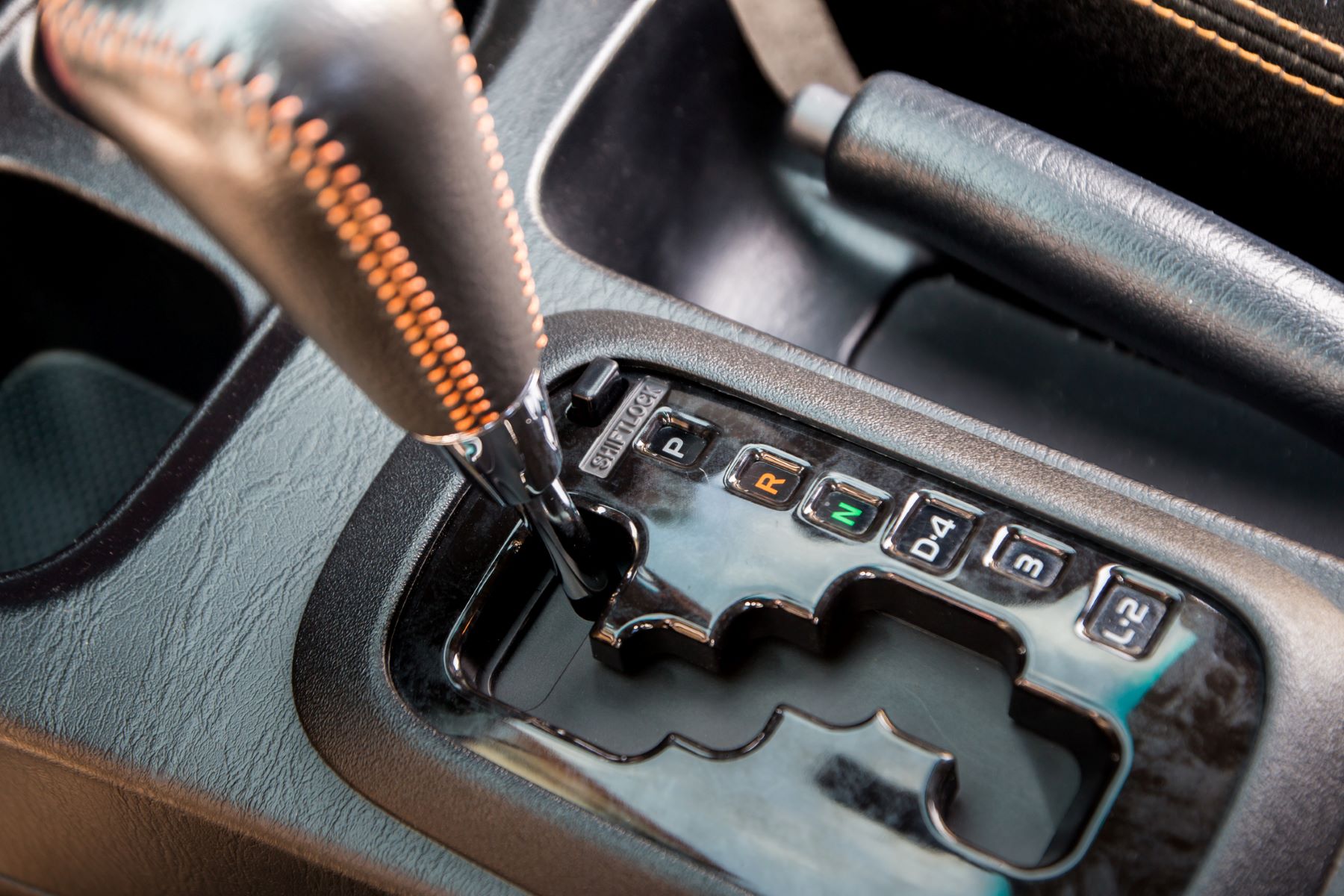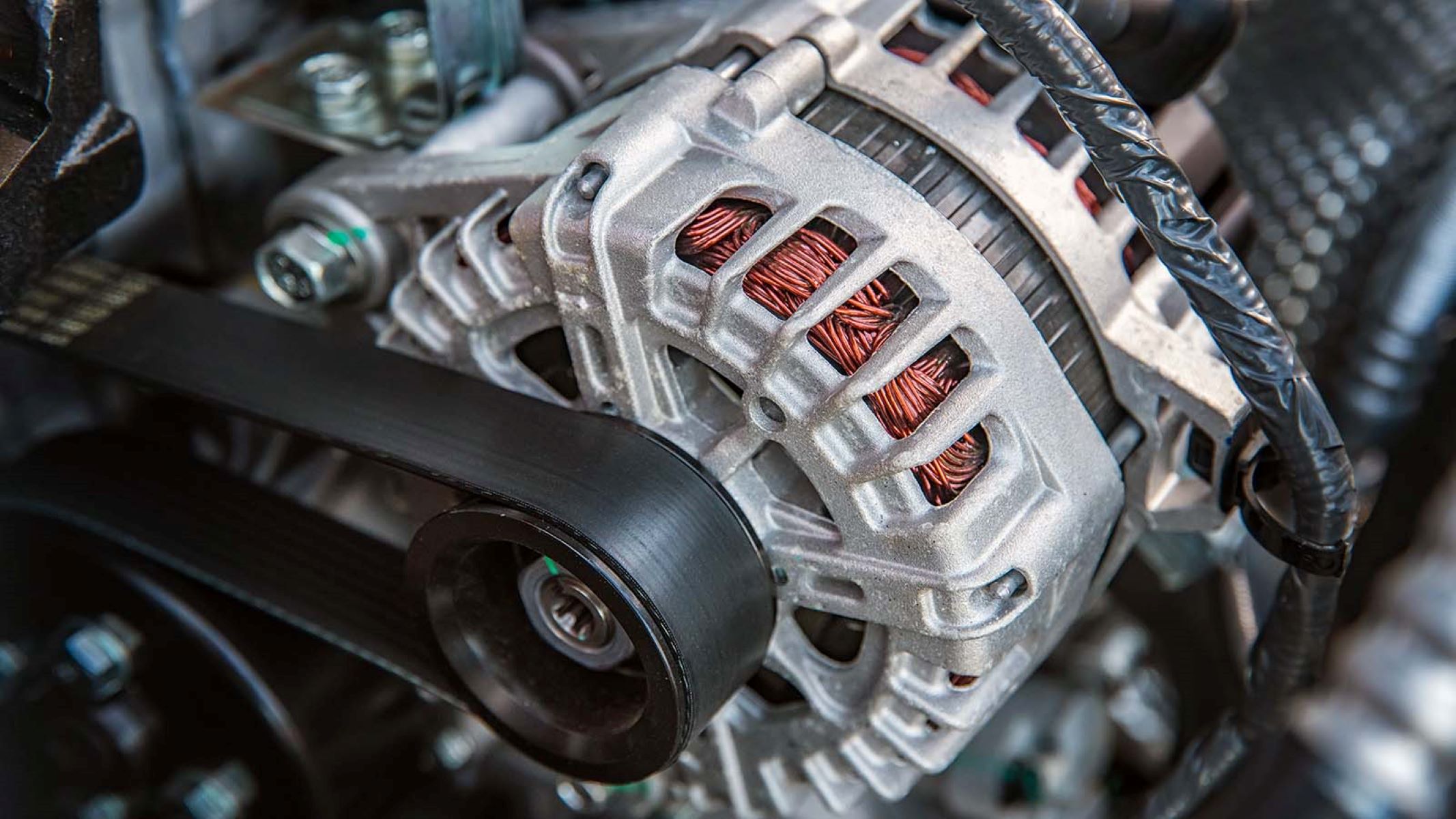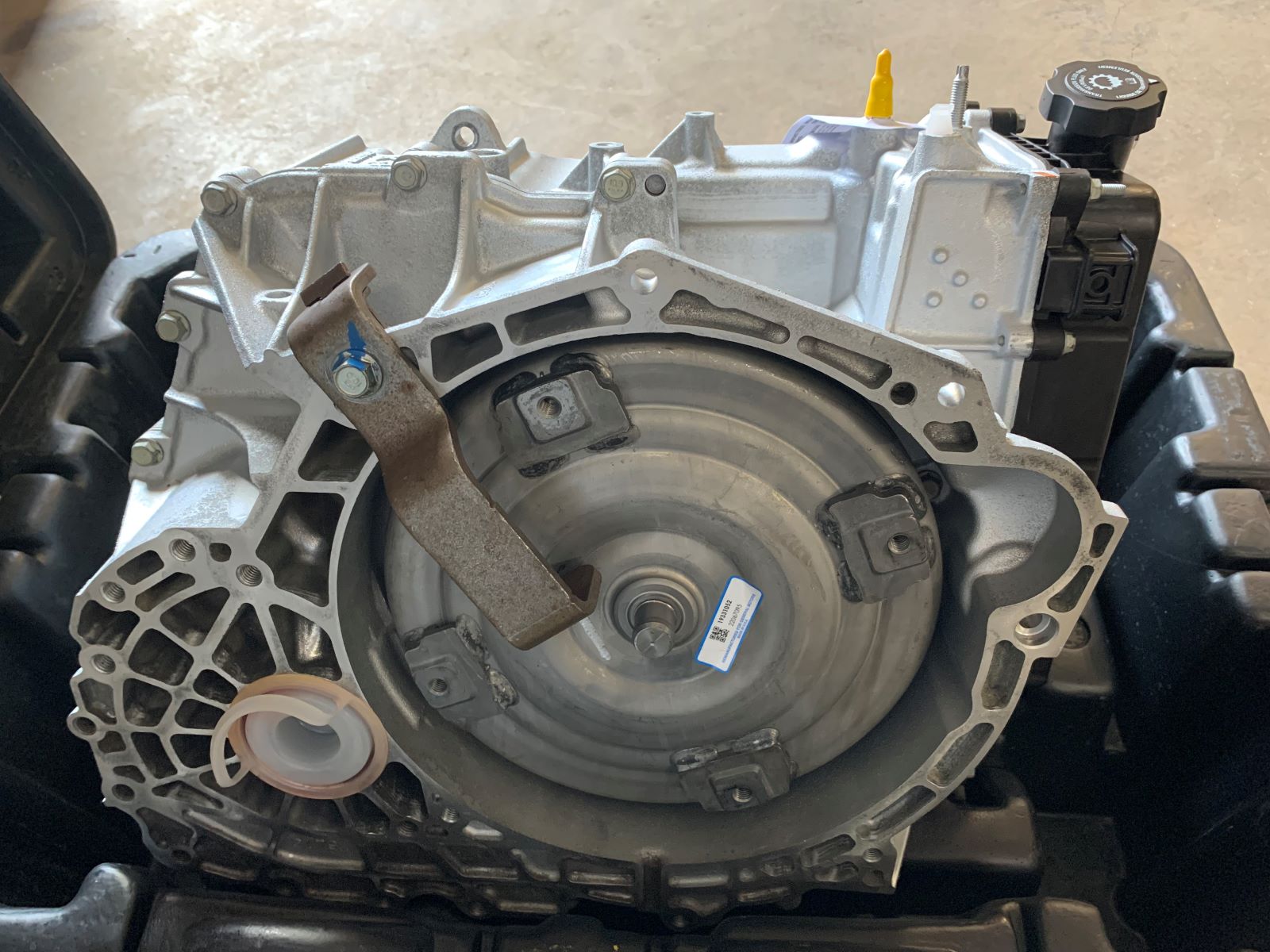Home>Automotive>Unleash The Power Of 2 And L Gears In Your Automatic Transmission


Automotive
Unleash The Power Of 2 And L Gears In Your Automatic Transmission
Published: January 11, 2024
Enhance your automatic transmission with the power of 2 and L gears. Explore the latest automotive innovations for an optimized driving experience.
(Many of the links in this article redirect to a specific reviewed product. Your purchase of these products through affiliate links helps to generate commission for Regretless.com, at no extra cost. Learn more)
Table of Contents
Introduction
Automatic transmissions have long been a staple in the automotive world, offering drivers a convenient and effortless driving experience. While many drivers are familiar with the basic operation of automatic transmissions, there are certain features that often go underutilized. In particular, the 2 and L gears, also known as second gear and low gear, respectively, are valuable tools that can enhance the performance, efficiency, and control of your vehicle.
In this article, we will delve into the often overlooked benefits of these gears and explore how they can be harnessed to optimize your driving experience. Whether you're navigating steep inclines, towing heavy loads, or simply seeking improved control in challenging driving conditions, understanding and leveraging the power of 2 and L gears can make a significant difference in your driving experience. So, let's embark on this journey to unlock the full potential of your automatic transmission.
Understanding Automatic Transmissions
Automatic transmissions are a marvel of automotive engineering, designed to seamlessly manage the shifting of gears without requiring driver intervention. Unlike manual transmissions, which rely on the driver to engage the clutch and shift gears, automatic transmissions use a complex system of hydraulics, sensors, and computer-controlled components to execute gear changes automatically.
At the heart of an automatic transmission is a hydraulic torque converter, which serves as the primary means of transmitting power from the engine to the transmission. This fluid coupling allows for smooth and continuous power delivery, eliminating the need for manual clutch engagement. Additionally, automatic transmissions feature a planetary gear set, which enables the transmission to automatically shift between various gear ratios based on driving conditions and throttle input.
The transmission control module (TCM) plays a crucial role in monitoring various inputs, such as vehicle speed, engine load, and throttle position, to determine the optimal gear for the current driving situation. This intricate system ensures that the transmission seamlessly adjusts gear ratios to deliver the ideal balance of performance, fuel efficiency, and drivability.
Furthermore, modern automatic transmissions often incorporate advanced features such as adaptive shift logic, which can learn and adapt to the driver's behavior over time, optimizing gear changes based on individual driving styles. Additionally, some transmissions offer manual shift modes, allowing drivers to manually select gears for a more engaging driving experience.
Understanding the inner workings of automatic transmissions provides valuable insight into the capabilities and potential of these sophisticated systems. By grasping the fundamental principles behind automatic transmissions, drivers can better appreciate the significance of features such as 2 and L gears, which play a crucial role in enhancing performance and control in specific driving scenarios.
The Power of 2 Gears
The inclusion of 2 gears in automatic transmissions offers a range of benefits that can significantly enhance the driving experience. When transitioning from 1st gear to 2nd gear, the transmission allows the engine to operate at a higher speed, resulting in increased torque and improved acceleration. This higher gear ratio enables the vehicle to efficiently propel forward, making it ideal for moderate-speed driving conditions.
One of the key advantages of 2 gears is their role in optimizing fuel efficiency. By swiftly shifting into 2nd gear, the engine can operate within a more economical RPM range, reducing fuel consumption without sacrificing performance. This is particularly beneficial during steady-state driving, such as cruising on highways or navigating urban roads with consistent speed limits.
Moreover, 2 gears play a crucial part in providing seamless and smooth acceleration. As the transmission shifts from 1st gear to 2nd gear, the engine's RPM drops, leading to a smoother transition and a more refined driving experience. This contributes to a reduction in engine noise and vibration, enhancing overall comfort for both the driver and passengers.
In addition to enhancing driving comfort and fuel efficiency, 2 gears also play a vital role in optimizing the vehicle's towing capabilities. When towing heavy loads, the increased torque provided by 2 gears allows the vehicle to effectively manage the additional weight. This is particularly advantageous when traversing inclines or challenging terrain, as the higher gear ratio provides the necessary power to conquer such demanding conditions.
Furthermore, 2 gears can be leveraged to enhance engine braking, particularly when descending steep grades. By downshifting into 2nd gear, the transmission helps to control the vehicle's speed by utilizing the engine's resistance to slow down without solely relying on the brakes. This can reduce brake wear and prevent overheating, contributing to improved safety and longevity of braking components.
In essence, 2 gears in automatic transmissions offer a multifaceted advantage, encompassing improved acceleration, enhanced fuel efficiency, smoother driving dynamics, heightened towing capabilities, and effective engine braking. By understanding and effectively utilizing 2 gears, drivers can harness the full potential of their automatic transmissions, thereby elevating their driving experience across a diverse range of scenarios.
The Efficiency of L Gears
L gears, also known as low gears, represent a valuable asset within automatic transmissions, offering a spectrum of benefits that contribute to enhanced efficiency and control in specific driving situations. Unlike traditional gears, L gears are designed to provide increased torque multiplication, enabling the vehicle to navigate challenging terrain, manage heavy loads, and optimize performance in demanding driving conditions.
One of the primary advantages of L gears lies in their ability to amplify torque output from the engine, making them particularly advantageous for scenarios that demand substantial power, such as towing heavy trailers or ascending steep inclines. By engaging L gears, the transmission allows the engine to operate at a higher RPM, resulting in greater torque delivery to the wheels. This heightened torque multiplication empowers the vehicle to conquer demanding terrain with confidence, ensuring smooth and controlled progress even under significant load or incline.
Furthermore, L gears play a pivotal role in optimizing traction and stability, especially in off-road or low-traction environments. By leveraging the increased torque provided by L gears, the vehicle can effectively overcome obstacles, traverse uneven surfaces, and maintain traction in challenging off-road conditions. This heightened torque output enhances the vehicle's ability to navigate through mud, sand, or snow, providing drivers with a greater sense of control and confidence when venturing off the beaten path.
In addition to their utility in towing and off-road scenarios, L gears offer a valuable tool for optimizing engine braking. When descending steep grades, engaging L gears enables the transmission to harness the engine's resistance, effectively slowing down the vehicle without relying solely on the brakes. This not only reduces the strain on the braking system but also enhances safety by mitigating brake fade and overheating, particularly during prolonged descents.
Moreover, L gears can be leveraged to enhance the vehicle's overall responsiveness and control, particularly in situations that require precise speed management and maneuvering. By utilizing the increased torque multiplication provided by L gears, drivers can achieve finer control over the vehicle's speed and acceleration, making it easier to navigate through challenging driving conditions with heightened precision and confidence.
In essence, the efficiency of L gears in automatic transmissions extends beyond mere torque multiplication, encompassing enhanced traction, off-road capability, optimized engine braking, and improved control in various driving scenarios. By understanding and effectively harnessing the capabilities of L gears, drivers can unlock a new level of efficiency and control, elevating their driving experience and expanding the versatility of their vehicles.
How to Utilize 2 and L Gears
Leveraging the Power of 2 Gears
When it comes to harnessing the potential of 2 gears in your automatic transmission, understanding the optimal scenarios for their utilization is paramount. One of the primary applications of 2 gears is during moderate-speed driving conditions, such as cruising on highways or navigating urban roads with consistent speed limits. By allowing the transmission to shift into 2nd gear, the engine can operate at a more economical RPM range, thereby enhancing fuel efficiency without compromising performance. This makes 2 gears particularly beneficial for long-distance driving, where maintaining a steady speed is essential for maximizing fuel economy.
Additionally, 2 gears can be effectively employed when accelerating from a standstill or during moderate-speed acceleration. As the transmission seamlessly transitions into 2nd gear, the vehicle experiences smoother and refined acceleration, reducing engine noise and vibration while delivering a more pleasurable driving experience. Furthermore, when towing heavy loads or traversing inclines, downshifting into 2nd gear can provide the added torque necessary to manage the increased demand for power, ensuring a confident and controlled driving experience.
Harnessing the Efficiency of L Gears
Leveraging the efficiency of L gears involves recognizing the specific driving scenarios where their enhanced torque multiplication and control capabilities can be most advantageous. When towing heavy trailers or carrying substantial loads, engaging L gears allows the transmission to deliver increased torque to the wheels, empowering the vehicle to manage the added weight with confidence and stability. Similarly, when navigating steep inclines or challenging terrain, utilizing L gears ensures that the engine operates at a higher RPM, delivering the necessary power to conquer demanding conditions with ease.
Moreover, off-road enthusiasts can capitalize on the traction-enhancing properties of L gears when venturing into rugged terrain. By engaging L gears, drivers can optimize the vehicle's off-road capability, providing the heightened torque necessary to overcome obstacles and maintain traction on uneven surfaces. This not only enhances the vehicle's stability and control but also instills a greater sense of confidence when exploring off-road environments.
Furthermore, during descents on steep grades, the utilization of L gears facilitates effective engine braking, reducing the reliance on the vehicle's braking system and mitigating the risk of brake overheating and fade. This is particularly valuable for maintaining control and safety during prolonged descents, ensuring a more controlled and secure driving experience.
By understanding the nuanced applications of 2 and L gears and effectively integrating them into your driving strategy, you can optimize the performance, efficiency, and control of your automatic transmission, unlocking a new realm of driving capabilities and enhancing your overall driving experience.
Conclusion
In conclusion, the 2 and L gears in automatic transmissions represent invaluable assets that can significantly enhance the performance, efficiency, and control of vehicles across a diverse range of driving scenarios. By understanding the distinct advantages offered by these gears and effectively harnessing their capabilities, drivers can unlock a new level of versatility and optimization within their automatic transmissions.
The power of 2 gears extends beyond merely facilitating smooth gear transitions. Its ability to enhance acceleration, optimize fuel efficiency, provide refined driving dynamics, and bolster towing capabilities makes it a versatile tool for a wide array of driving conditions. From steady-state cruising to conquering challenging inclines and managing heavy loads, 2 gears offer a multifaceted advantage that contributes to an improved driving experience.
On the other hand, the efficiency of L gears shines through in scenarios that demand heightened torque multiplication, traction optimization, and precise control. Whether navigating off-road terrain, towing heavy loads, or descending steep grades, L gears empower drivers to tackle challenging driving conditions with confidence and stability, while also mitigating brake wear through effective engine braking.
By recognizing the optimal applications of 2 and L gears and integrating them into their driving strategy, drivers can elevate their overall driving experience. Whether it's achieving enhanced fuel efficiency during long-distance travel, optimizing traction and stability in off-road environments, or confidently managing heavy loads and challenging terrain, the utilization of 2 and L gears opens up a realm of possibilities for drivers seeking to maximize the potential of their automatic transmissions.
In essence, the inclusion of 2 and L gears in automatic transmissions represents a testament to the engineering sophistication and adaptability of modern vehicles. These gears not only enhance the driving experience but also underscore the importance of understanding and leveraging the nuanced capabilities of automotive technology to optimize performance and efficiency.
As drivers continue to explore the capabilities of their vehicles, the comprehensive utilization of 2 and L gears stands as a testament to the ongoing evolution of automotive engineering, empowering individuals to navigate diverse driving scenarios with enhanced confidence, efficiency, and control.














